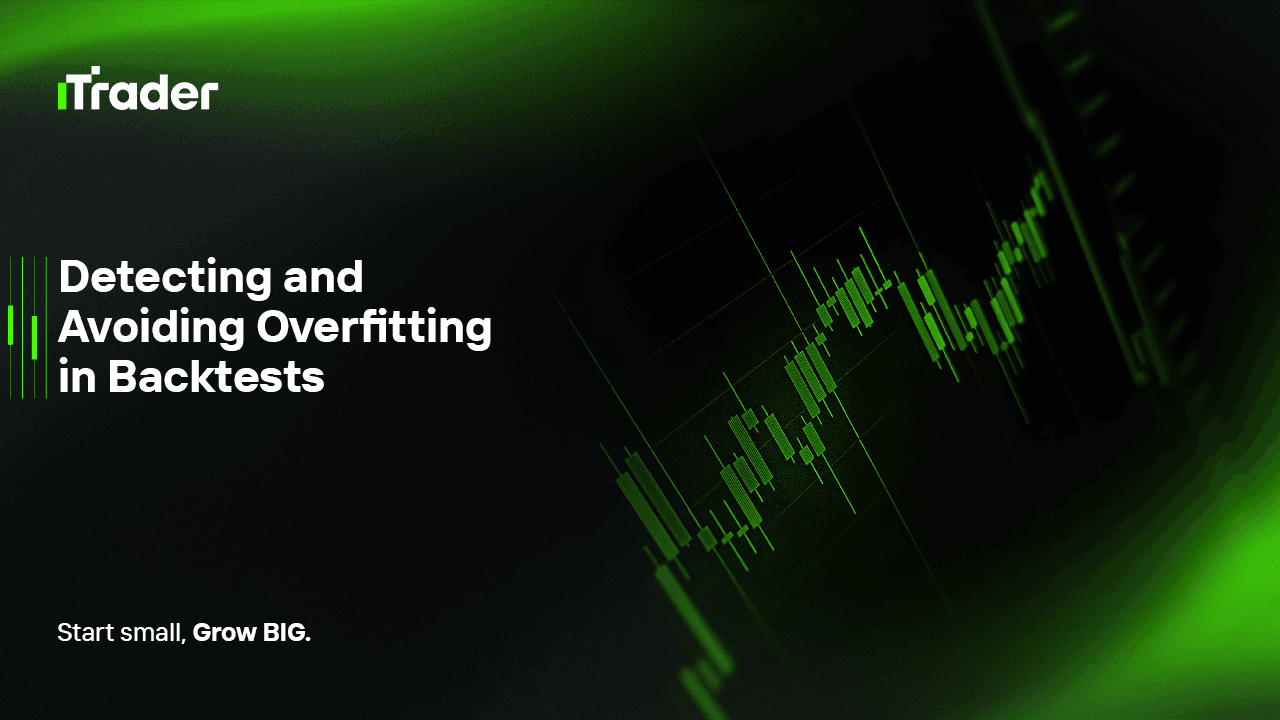2025-09-01
Backtesting is one of the most powerful tools available to traders and system developers. It allows you to evaluate whether your trading idea would have worked in the past, giving a degree of confidence about how it might perform in the future. However, backtesting also carries a hidden danger: overfitting.

Overfitting occurs when a strategy is optimized to perform exceptionally well on historical data but fails when exposed to new market conditions. For prop traders, whose capital allocation and career opportunities depend on proving the robustness of their strategies, avoiding overfitting is not just a technical detail—it is a survival necessity.
This blog will examine the nature of overfitting in backtesting, why it poses serious risks, and how prop traders can systematically protect themselves from this pitfall.
Overfitting happens when a model or trading system becomes overly tuned to past data. In practice, this means your strategy is not capturing genuine market structure but rather random noise.
For example, imagine you design a moving average crossover system and then spend hours adjusting parameters until the equity curve looks perfect. If the rules are too specific—say, a 47-period MA crossing a 113-period MA only under certain market hours—the system might fit past data exceptionally but will likely fail in live markets.
Overfitting gives a false sense of security. The equity curve may look smooth, the drawdowns minimal, and the profit factor high, but all of it is an illusion built on hindsight.
For independent traders, overfitting is already a risk. For prop traders, however, the stakes are much higher:
In short, overfitting is not just a statistical issue. It can destroy a trader’s chance at a career within prop trading.
Recognizing overfitting early can save time and resources. Some warning signs include:
If a backtest seems “too good to be true,” it probably is.
The more parameters your strategy has, the more opportunities for overfitting. Simple strategies with clear logic tend to generalize better. For example, a moving average crossover with one or two filters is less prone to overfitting than a system with ten interdependent conditions.
Always divide your data into in-sample (for model development) and out-of-sample (for validation). A robust system should perform reasonably well on both. If it collapses out-of-sample, it is overfit.
Instead of a single backtest, perform multiple rolling optimizations and validations. This simulates live conditions and shows how the strategy adapts across different market environments.
Every trading rule should have a rationale. For example, trend-following systems should work because of market momentum, not because “it looked good” in historical data. If you cannot explain why a rule works in economic terms, it is probably a curve-fit artifact.
Testing hundreds of indicators and parameter combinations increases the chance of finding a false positive. Limit the number of tests and ensure that results make sense outside of statistics.
Borrowed from machine learning, cross-validation splits data into multiple folds. Each fold is tested separately to see if performance is consistent. This reduces the likelihood of tailoring a model to one specific dataset.
Randomizing the order of trades in backtests helps reveal whether performance depends on a lucky sequence of wins and losses. If results remain stable under randomization, the system is more robust.
By resampling historical returns, bootstrapping allows you to see how sensitive the strategy is to variations in the dataset. Stable results indicate lower overfitting risk.
In algorithmic models, regularization techniques penalize complexity. This prevents the system from placing too much weight on minor historical anomalies.
Overfitting is not just a technical issue; it is also psychological. Traders often fall into these traps:
Being aware of these biases is the first step to avoiding them.
Prop traders can follow a structured workflow to reduce overfitting risk:
Prop firms don’t expect perfection. They expect robustness. This means:
The goal is not to eliminate all losing trades but to show consistent decision-making under varied conditions.
Overfitting in backtesting is one of the biggest threats to prop traders. A strategy that looks flawless on paper can quickly collapse in live trading, leading to wasted time, lost opportunities, and failed evaluations.
The solution is not to abandon backtesting but to use it wisely. By keeping strategies simple, validating them across different datasets, applying robustness tests, and grounding every rule in sound market logic, traders can avoid the trap of overfitting.
For prop traders, the ability to prove that your strategy can withstand real market conditions is the ultimate edge. A robust but imperfect system will always outperform a fragile curve-fitted one in the long run.
© 2025 iTrader Global Limited | หมายเลขทะเบียนบริษัท: 15962
iTrader Global Limited ตั้งอยู่ที่ Hamchako, Mutsamudu, เกาะปกครองตนเอง Anjouan, สหภาพคอโมโรส และได้รับใบอนุญาตและอยู่ภายใต้การกำกับดูแลของคณะกรรมการหลักทรัพย์แห่งคอโมโรส ภายใต้หมายเลขใบอนุญาต L15962/ITGL
iTrader Global Limited ดำเนินการภายใต้ชื่อทางการค้า “iTrader” และได้รับอนุญาตให้ดำเนินกิจกรรมการซื้อขายฟอเร็กซ์ โลโก้ เครื่องหมายการค้า และเว็บไซต์ของบริษัทเป็นทรัพย์สินเฉพาะของ iTrader Global Limited
บริษัทย่อยอื่น ๆ ของ iTrader Global Limited ได้แก่ iTrader Global Pty Ltd หมายเลขทะเบียนบริษัทออสเตรเลีย (ACN): 686 857 198 โดยบริษัทนี้เป็นตัวแทนที่ได้รับอนุญาต (หมายเลขตัวแทนบริการทางการเงินของออสเตรเลีย (AFS): 001315037) ของ Opheleo Holdings Pty Ltd (ใบอนุญาตบริการทางการเงินของออสเตรเลีย (AFSL): 000224485) ซึ่งมีที่อยู่จดทะเบียนอยู่ที่ Level 1, 256 Rundle St, Adelaide, SA 5000 ข้อจำกัดความรับผิดชอบ: นิติบุคคลนี้ไม่ใช่ผู้ออก และไม่รับผิดชอบต่อผลิตภัณฑ์ทางการเงินที่ซื้อขายบนหรือผ่านเว็บไซต์นี้
คำเตือนความเสี่ยง: การซื้อขาย CFD มีความเสี่ยงสูงต่อการสูญเสียเงินทุนอย่างรวดเร็วเนื่องจากเลเวอเรจ และอาจไม่เหมาะสมกับผู้ใช้ทุกคน
การซื้อขายกองทุน CFD และผลิตภัณฑ์ที่มีเลเวอเรจสูงอื่น ๆ ต้องการความรู้เฉพาะทาง
จากผลการวิจัยพบว่า 84.01% ของผู้เทรดที่ใช้เลเวอเรจประสบกับการขาดทุน
โปรดตรวจสอบให้แน่ใจว่าคุณเข้าใจความเสี่ยงทั้งหมด และพร้อมที่จะสูญเสียเงินทุนก่อนที่คุณจะเข้าร่วมการซื้อขายที่มีเลเวอเรจ
iTrader ขอประกาศว่า บริษัทจะไม่รับผิดชอบต่อความเสี่ยง ความเสียหาย หรือการสูญเสียใด ๆ ที่เกิดขึ้นจากการซื้อขายแบบมีเลเวอเรจต่อบุคคลหรือนิติบุคคลใด ๆ ทั้งสิ้น
ข่าวสารและข้อมูลที่ปรากฏบนเว็บไซต์นี้มีไว้เพื่อวัตถุประสงค์ทางการศึกษาเท่านั้น ผู้ใช้ควรตัดสินใจทางการเงินอย่างอิสระและโดยใช้ข้อมูลอย่างรอบคอบ
ข้อจำกัด: iTrader ไม่ได้มุ่งเป้าเว็บไซต์หรือบริการไปยังผู้อยู่อาศัยในประเทศที่กฎหมายหรือข้อบังคับห้ามไม่ให้มีการทำธุรกรรมดังกล่าว
หากคุณอาศัยอยู่ในเขตอำนาจที่การใช้เว็บไซต์หรือบริการนี้ถูกจำกัด คุณต้องรับผิดชอบในการปฏิบัติตามกฎหมายท้องถิ่น
iTrader ไม่รับประกันว่าเนื้อหาบนเว็บไซต์ของบริษัทจะเหมาะสมหรือถูกต้องตามกฎหมายในทุกพื้นที่